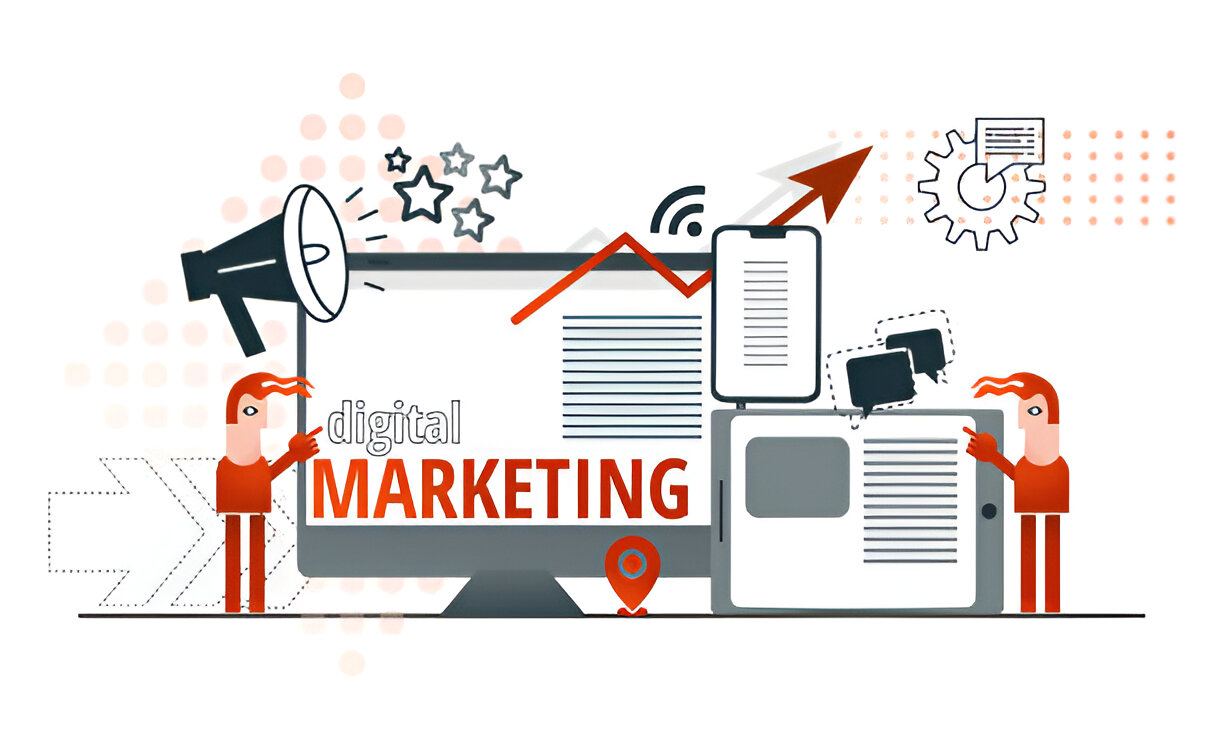Table of Contents
While there are plenty of digital marketing available to numerous targeted marketers today, email marketing is perhaps one of the most potent means of reaching the audiences. So, let’s deep dive and find out what makes email marketing a preferred choice even today, and what obstacles it has to overcome in today’s world? This guide looks into the various benefits and drawbacks of email marketing so that you can decide whether this approach is suitable for your enterprise.
What is Email Marketing?
Email marketing is the type of direct digital marketing that is sent directly to list of subscribers or customers. Most of the obtained e-mails have as objectives establishing and developing relationships, to provide information and to request specific behaviors such as a purchase or participation in an event. Even though the idea of email marketing is rather simple, such process needs some consideration of several factors: the content must reflect the client’s preferences, time of sending has to be carefully chosen, and, finally, the business has to be aware of its target audience.
Why Email Marketing is Not Going Anywhere
In the age of social networking and instant messaging, who would have thought that traditional e-mail marketing campaigns would be getting a renewed boost? However, studies show that email marketing still holds a competitive edge:
– High ROI: Email marketing is highly effective and offers one of the highest ROI’s among all digital marketing communication methods averaging $ 42 per $ 1 invested.
– High Reach: In the following five years, 2025, the count of email users will touch the figure of 4.6 billion. About 99% of everyday internet users have an email inbox, which consequently indicates that email marketing is one of the few platforms that can deliver a near universal consumer base for just about any geographical location or age bracket.
Alright, so back to the fundamentals of email marketing and at the same time trying to understand its drawbacks.
Benefits of Using E-mail Promotion
It turns out that email marketing has several benefits, which is why it is actively used in virtually all business sectors and becomes one of the fundamental pillars of digital marketing. Here are some of the top benefits:
1. Affordable and Cheap Solutions
Email marketing is significantly cheaper than conventional forms of marketing as broad print and or broadcast media. While sending out physical ads which may take thousands of dollars, an email campaign when properly structured can be sent out to thousands of people at an incredibly less amount of money. This affordability makes email marketing to be preferred by small businesses and startups with a small capital to invest. Some common emails marketing service providers include Mailchimp, Constant Contact, and SendinBlue; all these companies have subscription plans that depend on the number of users to enable companies to grow as they expand.
2. Customization and Target Market Division
Another strength of email marketing is that it allows targeting clients with specific promotional content or, vice versa, targeting specific content to specific audiences. Advantages of e-mail include; the use of e-mail marketers we are in a position to dispatch personalized messages relating to the preferences, behaviors or characteristics of the receiver. For instance:
– Behavioral Segmentation: Target messages according to past purchases, visited links, or communications with the website and/or consumers.
– Demographic Segmentation: Divide this depending on age, sex, geographical area, or income bracket.
– Psychographic Segmentation: Target customer interests, customer values, customer life styles.
Other data from Experian confirms that personalization can drive transaction rates as high as six times, which proves that simple yet effective method increases overall email effectiveness.
3. Direct Individual Customer Contact
Unlike SMM or display advertising where you negotiate bids and using formulas, email provides a direct channel to clients. It comes directly in the inbox making it a handy one on one communication means. Additionally, email is still always within reach, and not bound by algorithmic feeds which depend on audience engagement to push your content to your following, so there is a higher likelihood of the message getting to the audience. Such an engagement level is build a relationship with a brand, customer loyalty and direct communication which results in increased sales conversion.
4. Outcomes Easily Measurable and Accountable
Majority of the email marketing service providers provide heavy duty tracking and analyzing tools in which businesses can track the effectiveness of each campaign. Common metrics include:
– Open Rates: Number of open rates which refers to the percentage of the target group that opened the email.
– Click-Through Rates (CTR): The email’s click-through rate that represents the number of individuals who clicked a link within the message.
– Conversion Rates: The ratio of audience that was able to perform a specific activity, for example, purchase something.
– Bounce Rates: Were there any undeliverable email messages and if so, what percentage was it?
It being one of the most data-oriented marketing channels, where a company gets to know what does and does not work, based on these measurements.
5. Automation Capabilities
Email autoresponders enable the marketer to sequence and time when an email is sent based on an action that has occurred like registration, purchase, or even a cart left behind. Lead nurturing, the reaching out to cold customers and making consistent efforts to foster loyalty are best served by automation. For instance, eCommerce firms can easily implement post-purchase communication for the purpose of making requests for reviews or cross-selling.
6. High Return on Investment;ROI
Email marketing is still one of the most effective forms of online marketing and its ROI is steadily high. The Data & Marketing Association states that the average email marketing campaign has $42 in return for every dollar invested. The reason for this high ROI is simplicity and cheap cost of the emails, and that it is possible to target the right audiences and influence them to take the necessary action by availing limited & personalized offers.

Disadvantages of Email Marketing
However, as with any other advertising channel, email marketing comes with its standard set of obstacles. Here are some of the drawbacks:
1. Internet spam filters and deliverability issues of messages may also become an issue with the marketing campaign with for example Outlook permanently marking all the advertisement campaigns from the particular sender as junk or such like.
The greatest struggles of email marketing none include the ability to get your emails delivered to the recipients’ primary inbox and not the spam or junk folder. ESPs have very complex filtering mechanisms against spam and there are specific keyword, formatting options and practices that can easily set off those filters. To avoid this, businesses should be particular with the subject line of their emails, use limited promotional language and ensure that the email was welcomed by the recipients.
2. Jammed mailbox and multiple way to reach the right audience with the message
In today’s world, if an office employee receives 120 emails or more per day, they are fighting for a place in an overloaded inbox. The truth is that many consumers receive hundreds of emails a day from numerous brands, and even if you send a quite relevant email, it may simply get lost. Losing the focus of why the email is being sent will lead to poor results mainly when you have a weak subject line and a messed up value proposition.
3. The Danger of the Unsubscription and the Overload of the Targeted Audience
The problem is that if email marketing campaigns are delivered too frequently or contain irrelevant content or that are too promotional in nature, the audience is likely to become bored with them and/or delete the messages in large numbers. To minimize unsubscribes, it’s essential to:
– Specifically, the organisations should respect subscribers and avoid sending too many emails to them.
Make it easy to offer content most relevant to subscriber preferences.
To control e-mail delivery, users have to be given an option of the kind of e-mails to expect in their in-box.
A high rate can be harmful, especially if people leaving the list affect the quantity of customers; It means that there is a need to reconsider the process of email marketing.
4. Technical issues and compatibility problems
These emails need to be made to look good, regardless of the device and the email client that the recipient is using; they are opened on different devices with different screen resolutions. Unorganised emails might really seem scattered and this might pose a problem as users find it hard to deal with your emails. This can result into reduction in the open rates, click through rates and the over all conversations. Such issues are avoided by marketers as they devote their time to create responsive email design and send out the campaigns to multiple devices and different email clients for testing before the actual sending out.
5. Regulatory and Legal Requirement
Regulations in regards to e-mail marketing are numerous, as the consumer privacy must be protected in any case. For example, the CAN-SPAM Act for the USA, GDPR for Europe and equivalent laws around the world on how organizations can capture, store and process clients’ email data. Failure to adhere to these laws will lead to massive penalties hence an imperative for firms to update themselves on compliance to these laws pertaining email interaction. These include issues to do with the placement of the unsubscribe link, ensuring that a person subscribes to a list, and protecting users’ information.
6. Email Fatigue
It is very possible to over-communicate through the emails hence ending up with what is commonly known as ‘‘email fatigue’ where subscribers give up due to the many emails usually sent to them. Some indicators that reflect the fact of E-mail fatigue, are reduced Open rate, fewer Clicks and more people Unsubscribe. Large numbers of emails, can be fought beaten with following approaches They re-engage Subscribers, give them frequency choices, and make to be sure that every email matters.
Strategies for Handling Some of the Email Marketing Issues
In contrast, email marketing must overcome challenges that come with the strategy if results are to be achieved in marketing ventures. Here are some ways to optimize email marketing:
1. Offer Specific Overviews
Never send an email without having something valuable to pass across to the recipient. Regardless of whether the mail out is a product modification, a special offer, or an idea in a blog, the contents should meet the subscriber’s requirement.
2. Always Test Subject Lines and Work on Using the A/B Test
The subject line is what makes a difference in whether the contents of the email are going to be read or not. With A/B testing, marketers are able to compare the effectiveness of two subject lines, body text, images and call to action amongst others.
3. Key is also getting closer to the customer through the focus on the issue of segmentation and personalization.
Through segmentation, attracting and retaining customers as well as the delivering of messages only to the selected audience, marketers decrease the chances of creatingudge and hope messages. Another type is personal informative emails which make the customer more interested in opening emails and reading their content since the information is presented based on their needs and preferences.
4. Use clear and compelling Call-to-Action (CTAs)
A good call-to-action enables the reader to know what to do after going through what you have written. Regardless of the context, it’s being used such as when purchasing a product, reading through a blogger’s blog post or even when registering for an event, a CTA should be easily seen and its message easily comprehensible.
5. Mobile Friendly
Since over 50% of emails are being opened on mobile devices, this section confirms the effect of mobile friendless on emails. Hypothesis H1: Enhancing the usability of the message for mobile users by using responsive design, easy to click links but short and concise message content can increase the engagement.
6. Automate but Personalize
Although using computers has its benefits it can prevent the worker from being more personal when sending out correspondence. Personalize your emails using recipient name, writing content that makes sense for the specific audience, and sending the message at the correct time.
3 Signs That Email Marketing is Right for Your Business
When weighing up the benefits and drawbacks of the email marketing, it is possible to make a conclusion that this
The decisiveness of the formulated strategy is great, but its potential should be used meticulously. From a business perspective, therefore, it may be a very rewarding exercise if organizations need to foster and establish good customer relations, deliver and create customer value, and turn customers into buyers. But in achieving all these the following steps are critical Personalization, Quality output and respecting the target groups’ preferences.
Conclusion
Email marketing has stood the test of time as a successful digital marketing medium that is direct, cost efficient and, trackable. Nonetheless, its success can be obtained based on personalization and scalability, delivering content value, and sustaining the industry standards. Wise businesses craft their campaign by knowing the strengths and weaknesses of email marketing so that not only are the odds faced every now and then unparalleled but also the benefits of email as a tool in the process are accentuated.


